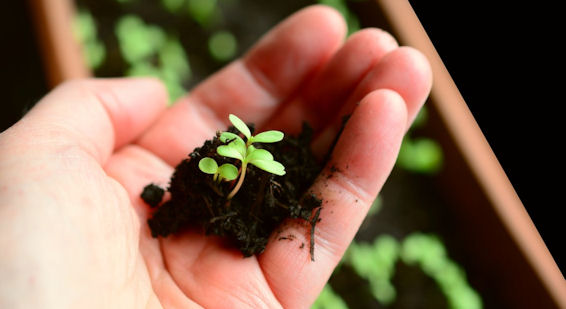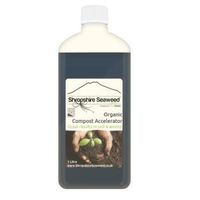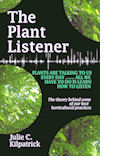Making and Using Leafmould
Fallen leaves are everywhere in autumn and, for gardeners, they can sometimes be a bit of an inconvenience.
They mess up the lawn, clog up ponds, suffocate our plants and make our paths treacherously slippy. For ponds and lawns especially it is important we rake up these leaves but the savvy gardener knows that, far from being an inconvenience, autumn leaves are a bountiful resource, just as nature intended them to be.
Unlike compost, leafmould is formed from decayed leaves only and its a valuable soil conditioner and additive for home made growing medias.
In a woodland, fallen leaves are a vital part of the eco system. As the leaf litter decomposes, it provides nutrients and a home to many different life forms including small mammals, insects and fungi. Deciduous woodlands depend on the annual leaf fall so don't collect leaves from a woodland site. It's best not to disturb leaf piles under hedges and shrubs either since they may be sheltering hibernating hedgehogs and other wildlife.

With a spring tine rake, gather all the leaves from your lawn. This will ensure you have no brown patches and also protect against the development of fungi and diseases that may be encouraged by the damp conditions.
If you have a garden pond, make sure you remove fallen leaves with a net. Leaves can block pond pumps as well as causing harmful bacteria to develop on the pond.
Sweep up all the leaves from your paths and driveways. If you have a gravel driveway, wait for a dry day and use a garden vacuum. This will pick up the leaves but is not strong enough to pick up any gravel. It is especially important to remove leaves from graveled areas since the leaves can break down and form a soil of sorts that will allow weed seeds to germinate.
You can sweep up leaves from the streets if you want to but they are likely to contain litter and pollutants in small amounts. Not a really big problem if you have to pick out the odd crisp packet or two.
Leaves can be added to the compost bin in small amounts and, if you're short of brown materials, they can help to dry up a wet bin. However, leaves decompose in the presence of fungi whereas compost relies on bacteria for its decomposition so it is better to allow leaves to break down separately from other plant material.
The simplest way to make leafmould is to fill black plastic bin bags about two thirds full, tie a knot at the top, punch a few holes in the sides, give the bags a shake, leave them somewhere out of sight and forget about them for two years. It couldn't be easier.
If you don't fancy the idea of bin bags, you can make a leaf bin using four posts and wire mesh. Put the leaves in the bin, cover them with a piece of carpet or anything else to block out the light and, again, forget about them. Because of the length of time it takes, it's better to have two of these bins so you can collect your leaves every year.
Leafmould doesn't contain nutrients in useful amounts. It does however make a great soil improver and peat substitute and will help break up clay soil as well as helping sandy soils to retain moisture. You can also use leafmould as mulch in autumn to keep moisture in the soil and to suppress weeds.
Mix it with sharp sand and use as an autumn top dressing for lawns. Sieve the leafmould, mix with the sand and spread over the lawn, brushing it in well with a stiff brush. Top dressing like this will give your lawn a great start in the spring.

Leafmould can be mixed with sharp sand, topsoil and home compost to make a good potting compost. The leafmould acts as a bulking agent and helps to retain moisture in the growing media. You can also use leafmould along with sand and a small amount of home compost for seed sowing.
A good recipe for potting compost is: 2 parts leafmould, 1 part garden compost, 1 part sand or grit.
Julie is a lecturer in horticulture, editor of Gardenzine and author of The Plant Listener.







